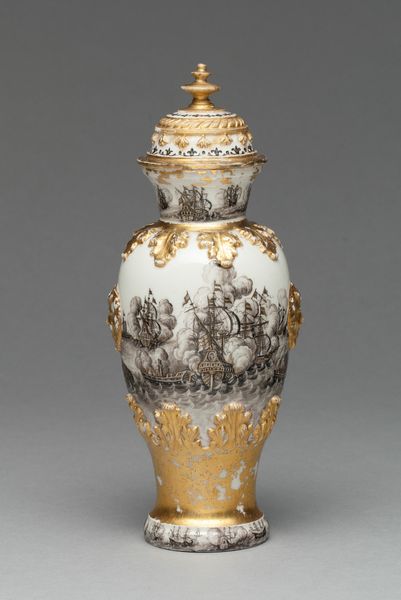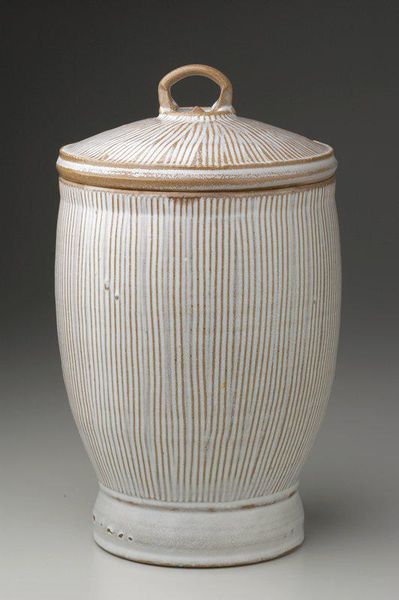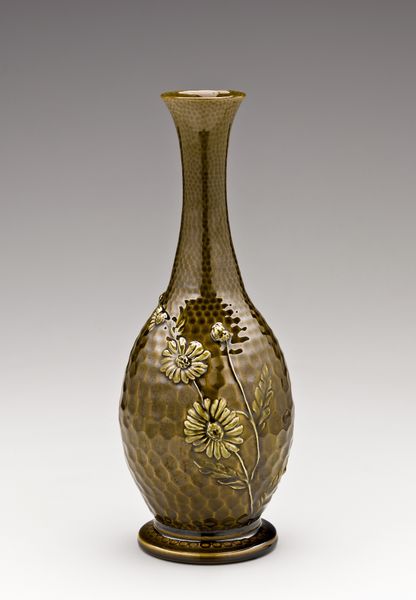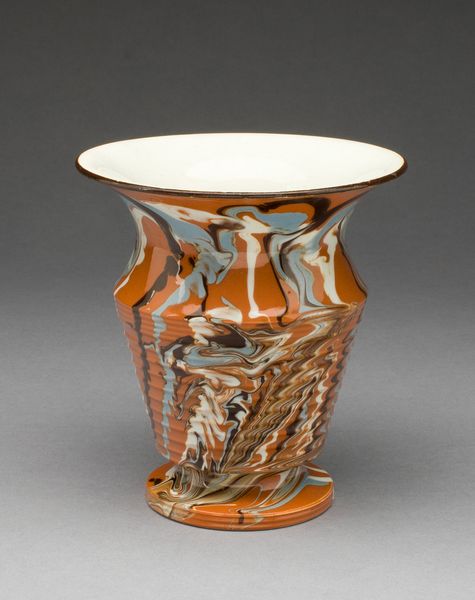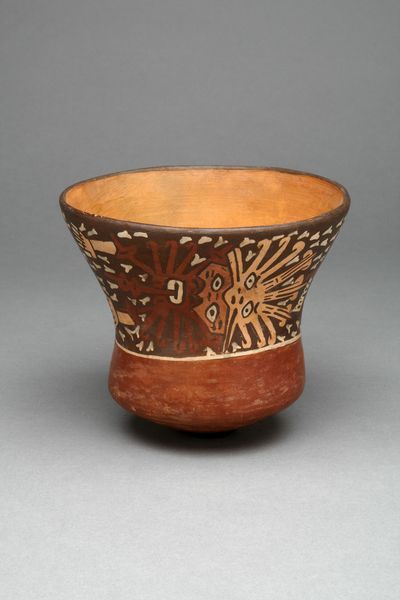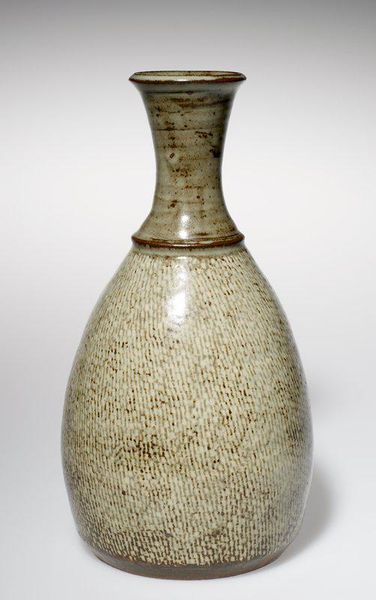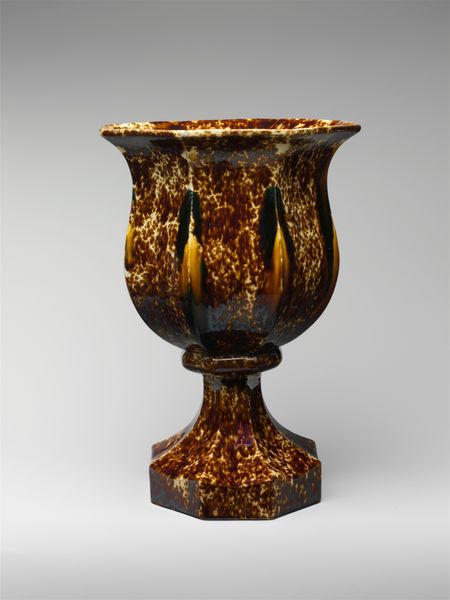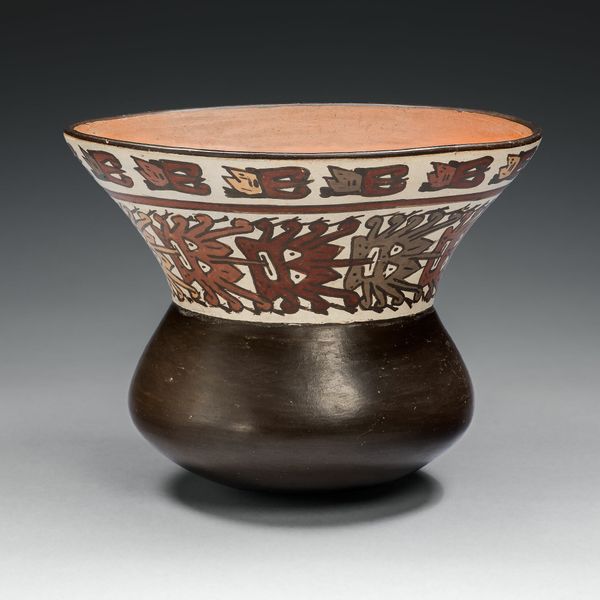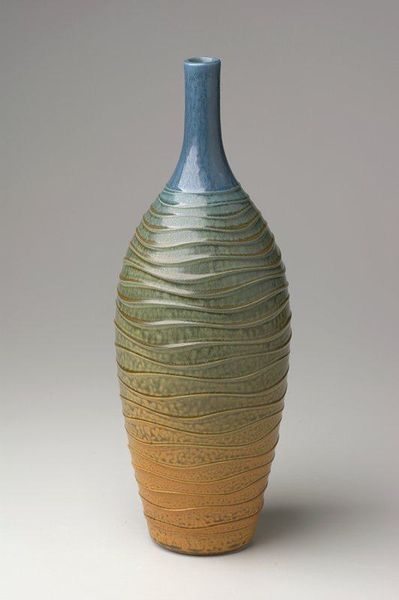
ceramic, earthenware
#
neoclacissism
#
ceramic
#
vase
#
earthenware
#
stoneware
#
ceramic
#
decorative-art
Dimensions: H. 23.1 cm (9 1/8 in.); diam. 16.5 cm (6 1/2 in.)
Copyright: Public Domain
Curator: Here we have a "Flower Vase" crafted by the Wedgwood Manufactory sometime between 1785 and 1800, a ceramic earthenware piece held here at the Art Institute of Chicago. What’s your initial impression? Editor: It’s… oddly soothing, in a restrained way. The palette is muted, almost earthy, yet the gold accents lift it. I’m immediately drawn to the mottled surface of the vase itself—how does that texturing play against the crisply defined leaf patterns? Curator: That textured effect gives us clues about how to read this piece in its era; that treatment mimics more luxurious materials, such as porphyry or marble, evoking imperial grandeur and power. Wedgwood here is cleverly offering an interpretation for aspirational elites to evoke sophistication through artifice. The crisp leaves? Those point directly back to ancient Greco-Roman aesthetics central to Neoclassicism. Editor: The semiotic opposition is fascinating. That textured surface is almost organic and randomly patterned, like naturally occurring stone; it is then juxtaposed with stylized leaves in mathematically perfect spacing, and that contrast resolves around this almost severe geometry in its basic vessel form. It's so balanced it almost becomes a platonic ideal of "vase-ness.” Curator: I agree completely, there’s also a certain tension there in trying to synthesize the organic with those manufactured forms. But those formal elements, the leaf motifs especially, speak to deeply ingrained concepts like fertility and regeneration. By invoking nature—even in such a controlled and ornamental way—the vase touches on something enduring. And think about where something like this would have been placed. What values of that home might this represent? Editor: Good question. It really transcends mere utility and steps firmly into a language of ritual. If the owners could afford flowers regularly, displaying this vase was certainly part of a message they wanted to express to the rest of the world about themselves. Curator: Absolutely! When one sees such art and craft on display together, the vessel itself becomes a symbol far outweighing any arrangement it might contain. Editor: So, we have this object oscillating between nature and artifice, individual statement and societal performance. Quite complex for what initially appeared to be a simple vase. Curator: Precisely! It's an intriguing example of how form, symbolism, and materiality work together to communicate powerful ideas about status, taste, and enduring cultural values. Editor: It’s fascinating to reconsider something so commonplace as intensely mediated through its design. I see it anew!
Comments
No comments
Be the first to comment and join the conversation on the ultimate creative platform.
